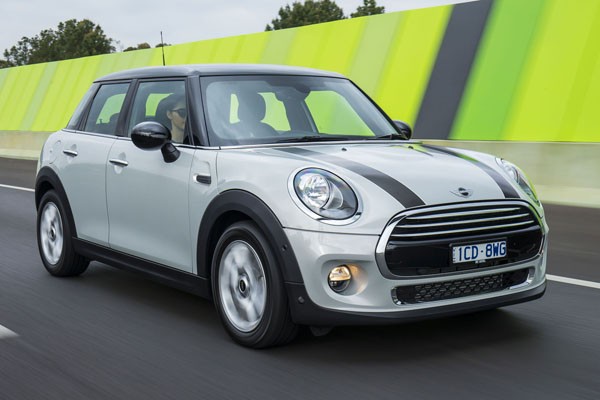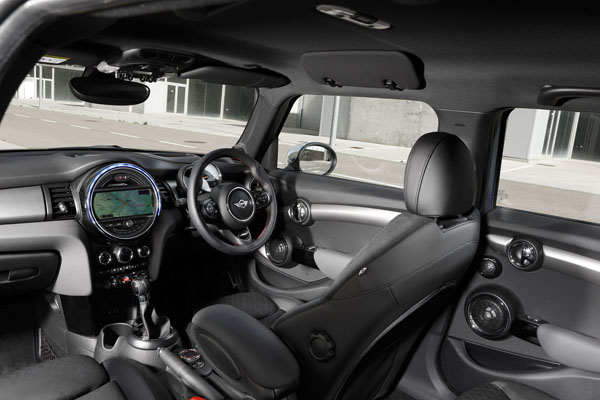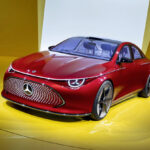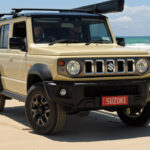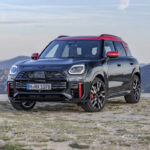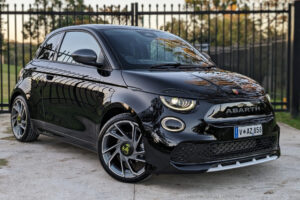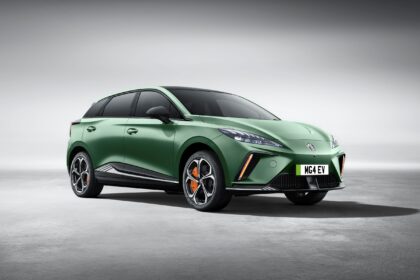Mini purists have long since given up looking away when instructed, so a five-door Mini is just another in a long line of abominations that fill the internet with bile. But, when your arch-rivals have a five-door to pull in the punters, you have to compete on level terms or you lose customers and anger dealers who care nothing for history or internet forum rage.
And so we now have a five door Mini hatch. Not the high-riding Countryman based on the old car, but a fresh, stretched version of the Mini we know and love. While three-door A1s aren’t even on sale anymore, this five-door Brit icon will complement the three-door hatch while filling a few driveways it may not have with the Countryman.
Armed with three cylinder petrol and diesel engines, the five-door could almost be a sensible choice.
VALUE
The Cooper D five door’s base price is $32,900 (up $1100 from the three door), which compares favourably with its most obvious competitor, the restrained Audi A1. The base car is well-equipped with dual-zone climate control, cloth upholstery, keyless entry and start, an elbow-bruising armrest, auto headlights and wipers, reversing sensors, sixteen-inch wheels, tyre pressure sensors and rear spoiler.
Our Mini was fitted with $4260 of options, including some mostly cosmetic fripperies like stripes and chrome detailing inside and out. The reversing camera was $470 and is among the highest resolution cameras we’ve yet seen. Anti-dazzle rear view mirrors are $550, driving mode selector $250 (totally worth it), Park Assist for $700 and metallic paint for $800.
Other options not fitted include dynamic damper control ($800) and sat-nav for a mildly startling $1100.
DESIGN
It looks like a Mini with five doors, rather more so than the Countryman. Forward of the B-pillar is basically unchanged while behind is an extra chunk of wheelbase, bodywork and doors. The third window at the back is a little awkward from some angles, but it could have been a lot worse.
The extra 72 mm in the wheelbase is sacrificed at the knees of the back seat tag-alongs. The practical result is a door that just gets away with being worthy of the name while allowing smaller humans ingress to a more spacious back seat. The longer roofline means rear headroom is just as good as the three-door, too.
The boot is a reasonable size for throwing in a few bags of shopping or a couple of decent-sized soft bags (or one Samsonite). Drop the seats and you have a fair approximation of a small panel van, albeit with a big step in the floor.
Inside is an evolution of the old Mini’s interior. The toggle switches, the big circles and the funny pod on the steering column housing an integrated speedo and information system all work well.
It’s a great interior, with excellent materials throughout but it is, as you would expect, tight. The standard armrest is in the way in the manual, but it does flip up and out of the way. Storage is squeezed into every space, with slots, bins and cubby holes that will swallow your bits and pieces.
A nice touch is the interior LED lighting that can change colour.
Front seat occupants get a good deal in every direction, even if you need to compromise for rear seat passengers. The upright windscreen means you never feel particularly close to the dash or screen even you’ve cranked the seat forward and makes the cabin feel bigger than it is.
SAFETY
Six airbags, ABS, stability and traction control, corner braking control, brake assist, active pedestrian safety and crash sensors have delivered a four star EuroNCAP. The lowly score was caused by the performance of the pedestrian safety bonnet, and the lack of a sticker in the interior showing you how to disable the passenger airbag.
INFOTAINMENT
The Mini’s big central pod houses a 6.5-inch screen controlled by an iDrive-style rotary dial. It’s not just iDrive-style – it is pretty much lifted straight out of BMW, then given funkier graphics.
The screen is clear with appropriately fun animations and is a vast improvement over the old car’s weird dial. You can connect phone via USB or Bluetooth and both are easy to organise and control either with the rotary dial, steering wheel controls or voice commands.
The four speaker stereo is adequate – if you want more, there is, predictably, an option to pump up the power.
ENGINE / TRANSMISSION
BMW’s modular engine family has yielded a 1.5-litre diesel triple for the Cooper D. The revvy three-cylinder has a power output of 85 kW at 4000 rpm and torque of 270 Nm at 1750 rpm.
BMW claims 3.9 litres per 100km on the combined fuel consumption cycle with the six-speed manual. It delighted us by achieving an impressive 4.9 L/100km in a week of normal Sydney driving which included the usual horrendous traffic and disgusting humidity to keep the air-con busy. These figures come with the aid of stop-start, brake energy regeneration, and without resorting to Eco mode.
DRIVING
The great news is it still feels just like a Mini should. For front passengers, there’s no reason to think that just because rear seat passengers get a better deal than the normal hatch that it could in any way kill the fun.
It retains the same chunky steering feel (especially in Sport mode), the trademark bouncy ride and the tremendously eager corner-hunting instinct. While a “normal” five door hatch will do it all more cheaply, it certainly won’t do it with anywhere near as much fun.
The diesel quite likes to rev and coupled with the six-speed manual and long shifter, it’s a lot of fun to keep things spinning away. Similar to the petrol, then.
That huge slab of torque, however, means you can stick it in third and leave it there. It’s happier to pootle than the standard engine, while rewarding with that triple growl. The diesel isn’t as quick off the line but will obliterate the petrol in the gears.
The three driving modes are quite distinctive, too. Eco mode knocks the edges off the throttle and steering response, Normal is home to light steering but a bit more response, while Sport sharpens up the throttle and adds some weight to the wheel.
SUMMING UP 3.5/5
It’s difficult to say that a Mini could ever be practical in the truest sense – its utility is limited and families would certainly only consider it a second car. But it is a terrific second car – enormous fun, cheap to run and with just enough space to keep people happy for short trips.
It’s a Mini, though, and that’s why people buy them, the extra doors on this one just remove the few remaining excuses. It’ll put a smile on your face because it’s impossible to hate a ride in a Mini. Unless you’re dead inside.
LIKES: Good equipment, good looks, useful rear seat
DISLIKES: It’s still small, diesel sound a bit dull, costs more than a Polo.
AT A GLANCE
Cooper D 1.5-litre turbo-diesel five-door hatch: $32,900 (manual), $35,900 (automatic)
Note: This price does not include dealer or government charges. Contact your local Mini dealer for drive-away prices.
SPECIFICATIONS (Mini Cooper D 2.0-litre five-door hatch)
ENGINE
Capacity: 1.496 litres
Configuration: Three cylinders in line
Head Design: DOHC, four valves per cylinder
Compression Ratio: 16.5:1
Bore/Stroke: 84.0 x 90.0 mm
Maximum Power: 85 kW @ 4000 rpm
Maximum Torque: 270 Nm @ 1750 rpm
DRIVELINE:
Driven Wheels: Front
Manual Transmission: Six-speed
Automatic Transmission: Six-speed
Final Drive Ratio: 3.389:1 (manual), 3.234:1 (automatic)
DIMENSIONS, WEIGHT AND CAPACITIES:
Length: 3982 mm
Wheelbase: 2567 mm
Width: 1727 mm
Height: 1425 mm
Turning Circle: 11.0 metres
Kerb Mass: 1205 kg
Fuel Tank Capacity: 44 litres
Towing Ability: Not supplied
Boot Capacity: 160 litres (680 litres with rear seatbacks folded)
SUSPENSION AND BRAKES:
Front Suspension: Single-joint McPherson spring strut axle with aluminium swivel bearing and anti-dive control
Rear Suspension: Multilink axle with weight-optimised trailing arm
Front Brakes: Ventilated disc
Rear Brakes: Ventilated disc
PERFORMANCE:
0-100 km/h Acceleration: 9.4 seconds
FUEL CONSUMPTION:
Fuel Type: Petrol 95RON
Fuel Consumption – Combined Cycle (EU): 3.9 L/100km
STANDARD WARRANTY:
Three years / 100,000 km




